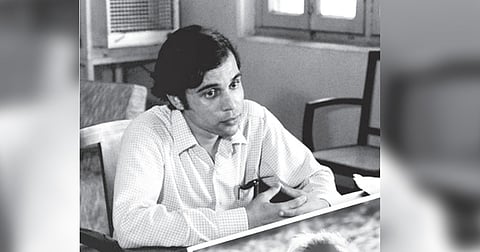

CHENNAI: India has been chosen as the official Country of Honour at the upcoming Marche’ Du Film, organised alongside the 75th edition of the Cannes Film Festival this year.
The announcement was made earlier in May in the backdrop of France and India marking 75 years of diplomatic ties in 2022.
Interestingly, restored versions of two rare feature films have been chosen as cultural representatives of India at the festival — Satyajit Ray’s Bengali film Pratidwandi (The Adversary, 1970) and G Aravindan’s Malayalam feature film Thampu (The Circus Tent, 1978).
For cinema lovers, it was a heartening development to see that in this era of big budget blockbusters, it’s the timeless classics directed by seasoned auteurs of yesteryear that are chosen to be screened at prestigious film festivals abroad.
The film industry in India is witnessing a gradual uptick post the pandemic slowdown.
Movies like Gangubai Kathiawadi, RRR and KGF 2, have managed to bring the crowds back to the multiplexes, a welcome sign for the industry on all counts. These films, which distil the essence of escapist fare, have been a mainstay of our cinematic culture from time immemorial.
With larger-than-life heroes, dazzling sets, and breathtaking stunts, the films are planned with one gladiatorial goal in mind — please the crowd, rake in the moolah.
However, when it comes to representing India on the world stage, these aren’t quite the films that we can showcase as a kaleidoscope or conscience of India, so to speak.
Arthouse features that have portrayed the social milieu of the times that we have lived in, which are focussed on the stories of the ordinary men and women on the street, and ring true to life, replete with trials and tribulations have resonance that lives beyond the two or three hours of their runtime.
To put this into context, Satyajit Ray’s 101st birth anniversary was also observed this month on May 2. And for Ray-philes, there could not be a more fitting tribute than one of his acclaimed social dramas being screened at Cannes.
Pratidwandi, a telling commentary on the disillusionment of youth, their struggles to land a job, the inability to relate to the ideologies of family and friends especially during the Naxal movement represented a watershed achievement in India’s parallel cinema movement.
Dhritiman Chatterji, who played the lead epitomised the angst of a whole generation.
And although one might not be cognizant of the political scene in the 70s, watching the film even today strikes a chord. Back then, Ray might have acutely felt the moral decadence of society and the city of Kolkata in general.
While it might be tempting to believe that the socio economic milieu prevalent at the time of the film’s making must have changed, the ground reality couldn’t be farther from the truth.
Repeat viewings of Pratidwandi offer new perspectives to every passing generation. The other film being screened at Cannes is the Malayalam film Thampu.
The has been recently restored with state of the art technology, making it available for a whole new generation of cinephiles.
The film revolving around the struggles of a street circus troupe in Kerala is often regarded as one of the placemarkers of the new wave of Malayalam parallel cinema. The documentary-like narrative which employs cinema-verite aesthetics focuses on a makeshift circus erected near a small village.
In an almost meta-fashion, it offers ordinary denizens of the hamlet a peek into the extraordinary world of circus artistes, filled with fantastic moments, thrills and chills.
Like everything else in the world, the circus is also a transitory, momentary experience for the villagers, and after the troupe has moved on, life goes on, as it always has.
As a storytelling medium, cinema is most suited to the masses. And while big budget money spinners are essential to sustain the business, one must remember that the intimate arthouse offerings are essential to sustain the medium.
Visit news.dtnext.in to explore our interactive epaper!
Download the DT Next app for more exciting features!
Click here for iOS
Click here for Android